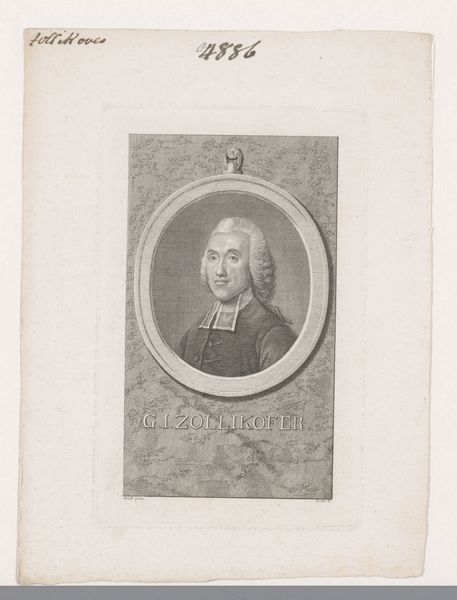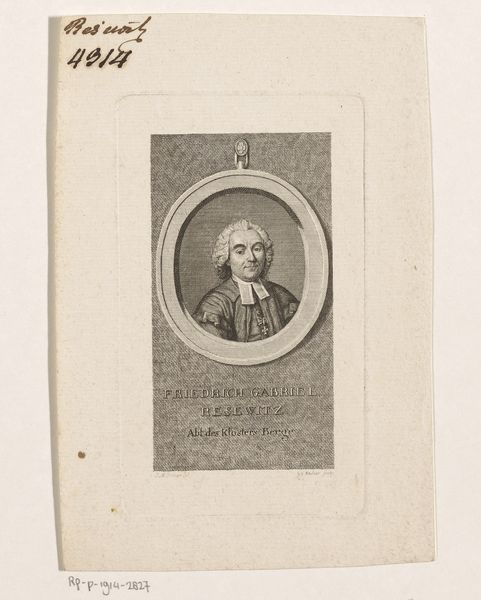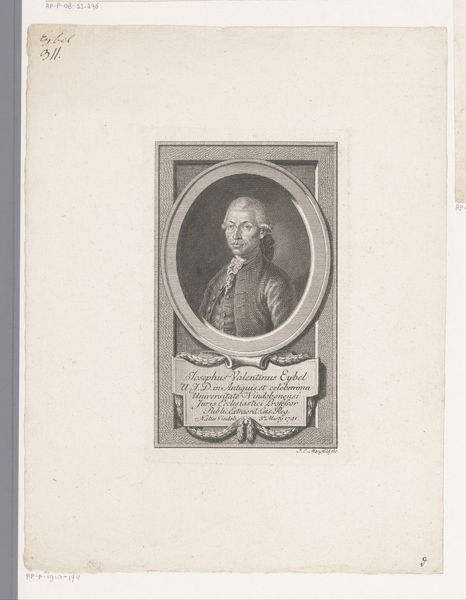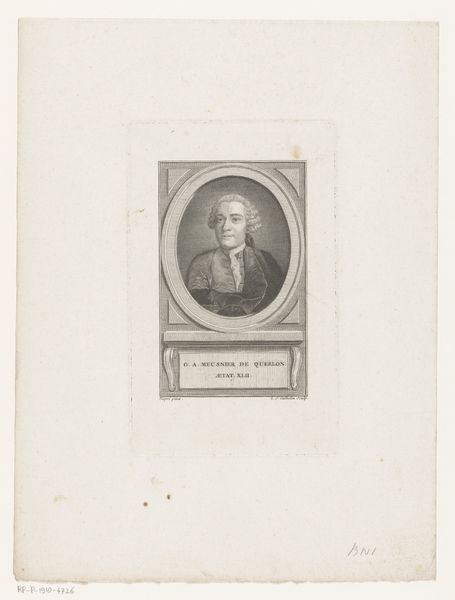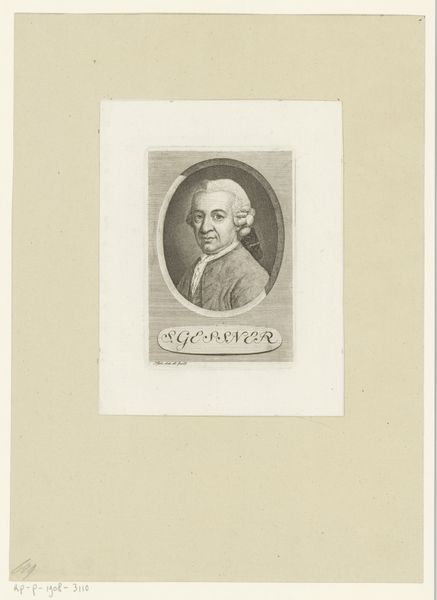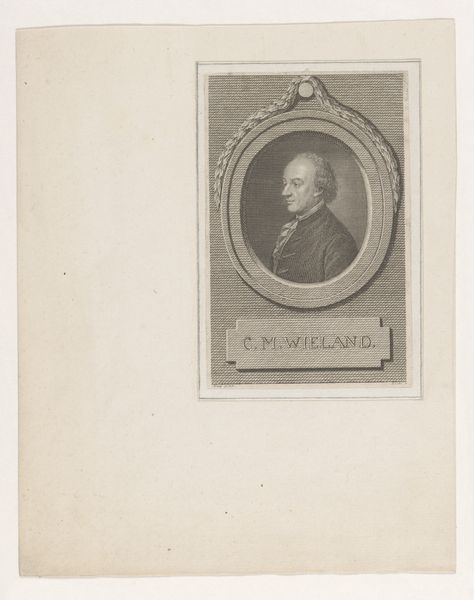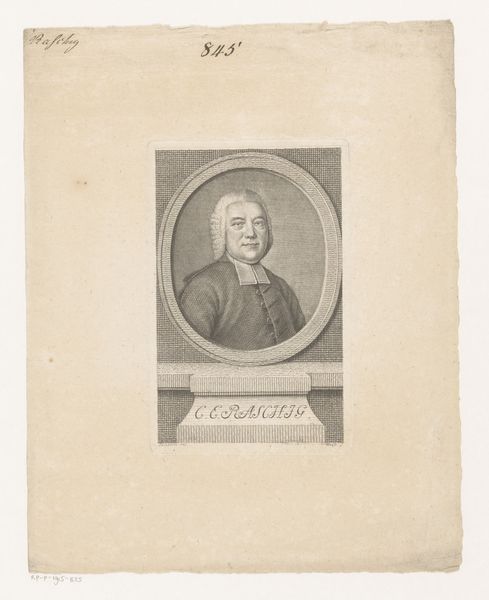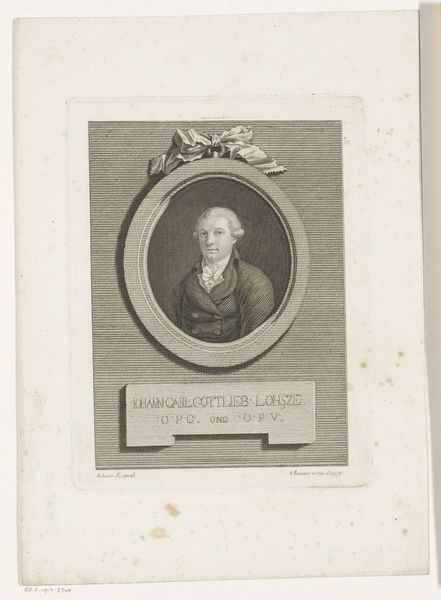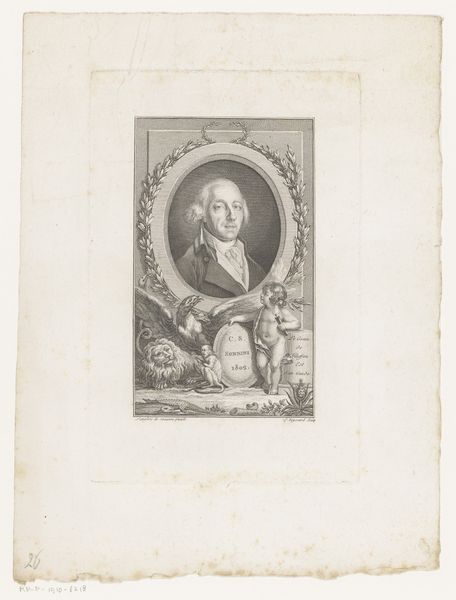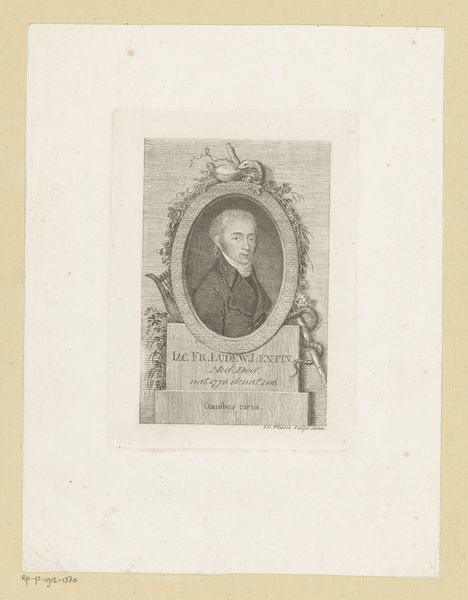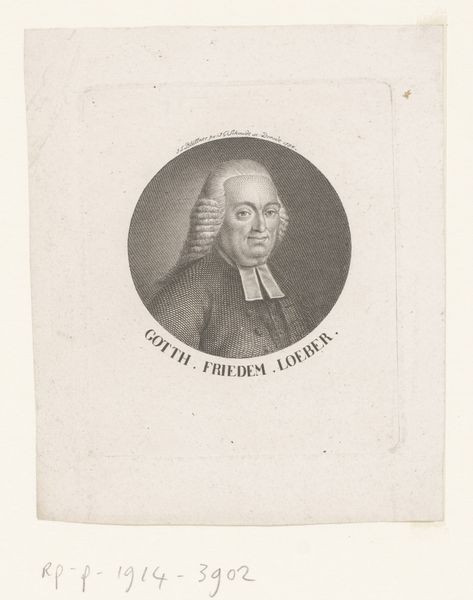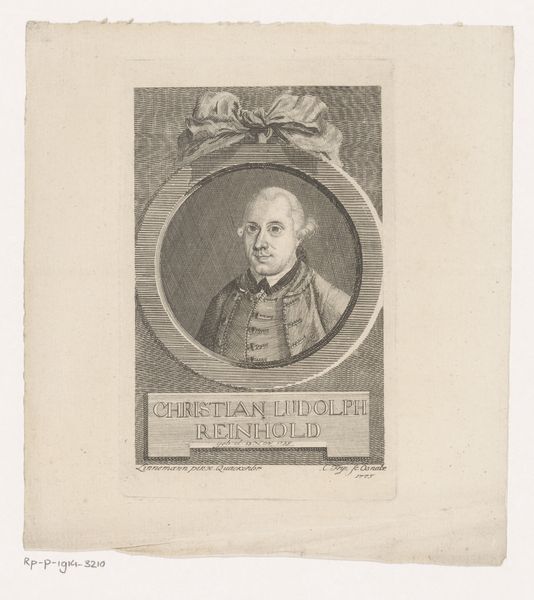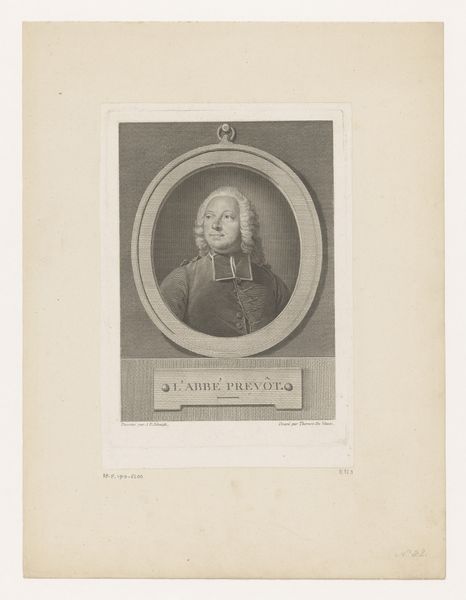
Dimensions: height 175 mm, width 108 mm
Copyright: Rijks Museum: Open Domain
Curator: Let’s examine this piece: it’s a print dating roughly from 1752 to 1803, residing here at the Rijksmuseum. Christian Gottlieb Geyser is credited as its maker. Editor: Immediately striking. It has a rather stoic aura, doesn't it? The textures and delicate linework produce this effect; the light and shadow add great detail. It gives it a sense of quiet, formal importance, but there’s an underlying coldness. Curator: The use of engraving on paper is paramount to appreciate the time and craft required to produce this baroque portrait of Georg Joachim Zollikofer. Consider the materials: the quality of paper stock available and the labor required for intricate engraving work—quite costly then. The creation of such a likeness served to elevate social standing. Editor: Absolutely. It certainly speaks to 18th-century social dynamics. Zollikofer was a Swiss theologian; his status signified through the deliberate style—that wig, the clerical collar—projecting power and authority. It is important to understand the cultural context; visual messages, such as portraits like this, played a pivotal role in the shaping of identity and social roles. How would he have liked to have been perceived, I wonder? Curator: Indeed, engraving allowed the wide distribution of images, and it made art and knowledge more accessible, changing the landscape of image consumption. Editor: That access was far from universally equal, of course. Consider the hierarchies reinforced through such imagery—who was being depicted and circulated in this manner, and more importantly, who was excluded from representation? The engraving serves to memorialize certain privileged subjects while erasing others. Curator: True. It’s easy to fall for only the aesthetic appreciation, but digging a little uncovers a whole complex world about artistic expression. Editor: Exactly. And interrogating those artistic expressions will only take us one step closer to truly understanding not just the art itself, but what surrounds and informs it.
Comments
No comments
Be the first to comment and join the conversation on the ultimate creative platform.
